You’re about to commence on a journey to tame the beast that is rosacea-prone skin! With the right steps, you can reduce inflammation and achieve a calmer complexion. Your skin will thank you as you learn to navigate the delicate balance of products and techniques to soothe and nurture your skin, rather than irritate it. Get ready to say goodbye to redness and hello to a radiant glow as you follow these simple yet effective steps.
Table of Contents
Key Takeaways: Steps For A Skincare Routine To Calm Rosacea-Prone Skin
To achieve a skincare routine that calms rosacea-prone skin, consider the following steps:
- Start with a gentle cleanser that is fragrance-free and hypoallergenic to avoid irritating the skin.
- Use a soothing toner that helps to balance the skin’s pH and reduce inflammation.
- Apply a calming serum that contains ingredients such as green tea or niacinamide to help reduce redness and inflammation.
- Moisturize with a non-comedogenic moisturizer that won’t clog pores and exacerbate rosacea symptoms.
- Protect your skin from the sun by using a broad-spectrum sunscreen with at least SPF 30 daily.
- Avoid harsh exfoliants and instead use a chemical exfoliant containing alpha-hydroxy acids or beta-hydroxy acids to gently remove dead skin cells.
- Keep your skincare routine simple and consistent to avoid irritating your skin and to help manage rosacea symptoms over time.
Understanding Rosacea
Before exploring into the world of skincare routines to calm rosacea-prone skin, you need to get familiar with what rosacea is. It’s a chronic skin condition characterized by inflammation, redness, and visible blood vessels on your face. You might experience flushing, acne-like breakouts, and even thickening of the skin if left untreated. Now, let’s break down the different types of rosacea to help you better understand your skin.
With the various types of rosacea, you’ll want to know which one you’re dealing with to tackle it effectively.
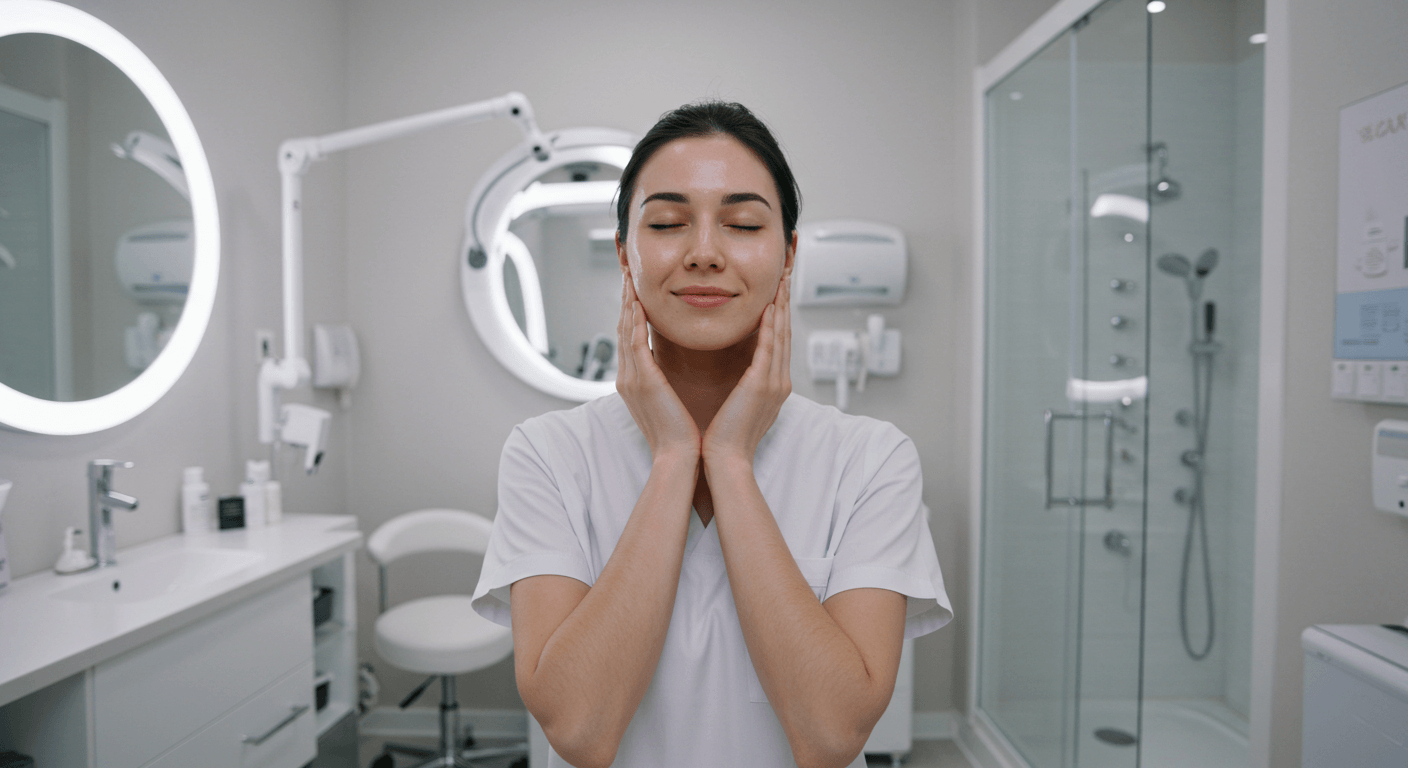
Types of Rosacea
You can check the following types of rosacea in the table below:
| Type of Rosacea | Description |
|---|---|
| Erythematotelangiectatic Rosacea | Characterized by flushing and visible blood vessels |
| Papulopustular Rosacea | Includes acne-like breakouts and inflammation |
| Phymatous Rosacea | Causes thickening of the skin and enlarged pores |
| Ocular Rosacea | Affects the eyes, causing redness and irritation |
| Granulomatous Rosacea | Characterized by inflammatory bumps and skin discoloration |
Any skincare routine you choose should be tailored to your specific type of rosacea, so take note of your symptoms and consult a dermatologist if needed.
Factors that Trigger Rosacea
An awareness of the factors that trigger rosacea is vital to managing your condition. You should be aware of the following triggers:
- Sun exposure
- Stress
- Hot or spicy foods
- Harsh skincare products
- Cold weather
Any triggers you identify can be avoided or mitigated to prevent flare-ups and reduce the appearance of symptoms.
Understanding the factors that trigger rosacea is key to keeping your skin calm and healthy. You can also consider:
- Avoiding extreme temperatures
- Using gentle skincare products
- Managing stress levels
- Protecting your skin from the sun
- Being mindful of your diet
Any efforts you make to minimize triggers and take care of your skin will help you achieve a clearer and more radiant complexion.
Preparing for a Skincare Routine
Now that you’re ready to tackle your rosacea-prone skin, it’s time to get started on preparing for a skincare routine that will help calm and soothe your skin. You’ll want to begin by getting to know your skin and its specific needs, taking note of any triggers that may cause your rosacea to flare up. This could be anything from harsh skincare products to environmental factors like sun exposure or extreme temperatures. By understanding what sets your skin off, you can start to make informed decisions about the products and practices that will work best for you.
There’s no one-size-fits-all approach to skincare, especially when it comes to rosacea-prone skin. You’ll need to be patient and willing to try out different products and techniques until you find what works for you. In the following sections, we’ll dive deeper into the specifics of creating a skincare routine that will help calm and soothe your rosacea-prone skin.
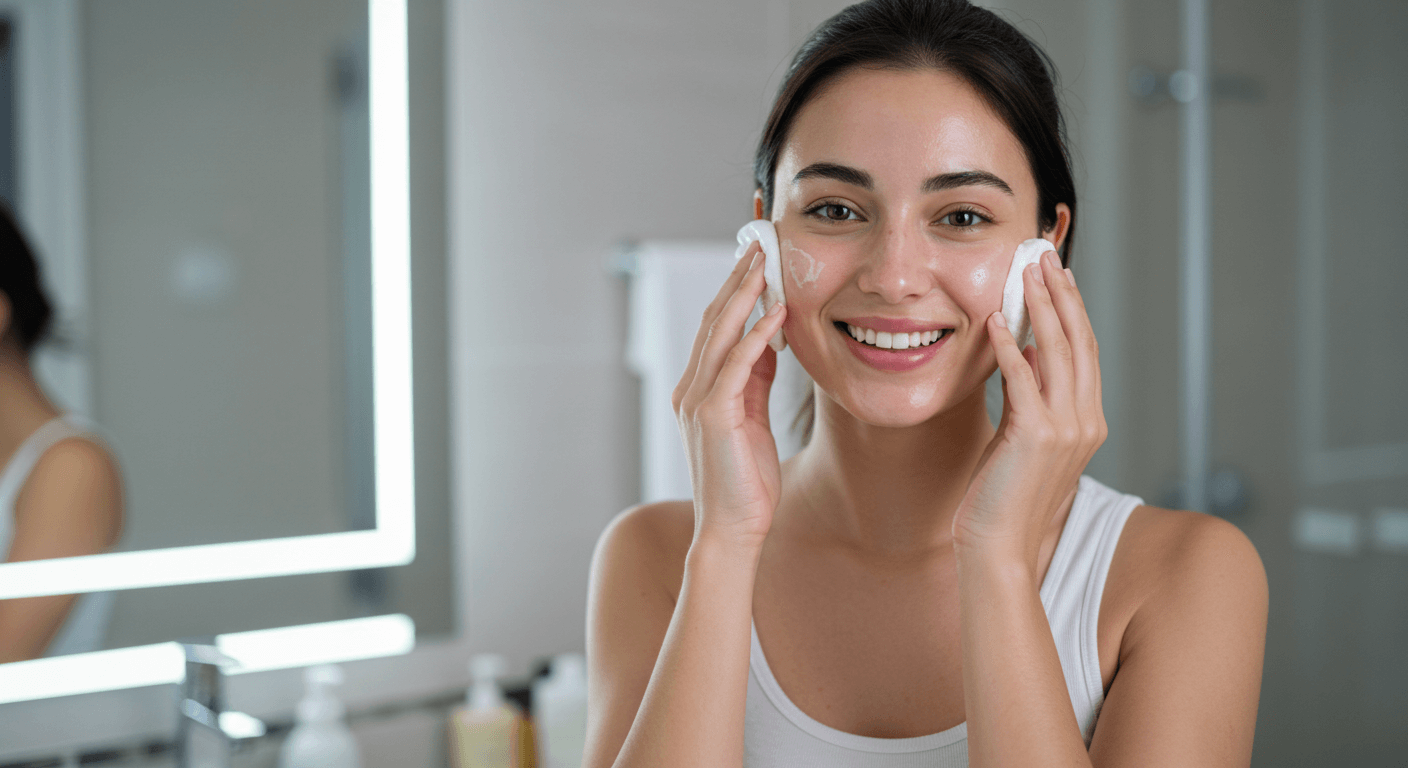
Essential Tips for Rosacea-Prone Skin
You should keep in mind the following tips:
- Use gentle products that are labeled “fragrance-free” or “hypoallergenic”
- Avoid exfoliating too frequently, as this can further irritate your skin
- Keep your skincare routine simple and consistent, avoiding the use of too many products
After taking these tips into consideration, you can start to build a skincare routine that will help calm and soothe your rosacea-prone skin.
Setting Realistic Expectations
The key to success with any skincare routine is to have realistic expectations. You won’t see results overnight, and it may take some time to find the right combination of products and practices that work for your skin. The most important thing is to be patient and not get discouraged if you don’t see immediate improvements. It’s also important to manage your stress levels, as stress can be a major trigger for rosacea. Understanding that rosacea is a chronic condition and that it will take time and effort to manage it, you can start to make positive changes that will help you achieve the healthy, glowing skin you deserve.
Step-by-Step Skincare Routine
All the products and treatments in the world can’t save your skin if you don’t have a solid routine in place. You need to establish a consistent regimen that works for your sensitive skin. Let’s break it down into a simple, easy-to-follow routine. Here’s a table to get you started:
| Product | Benefits |
|---|---|
| Cleanser | Gently cleans and prepares your skin for other products |
| Toner | Balances your skin’s pH and reduces inflammation |
| Serum | Delivers soothing ingredients to calm your skin |
| Moorit | Hydrates and protects your skin from environmental stressors |
For the best results, you’ll want to tailor your routine to your individual skin type and concerns. Let’s investigate the morning and evening routines that will help calm your rosacea-prone skin.
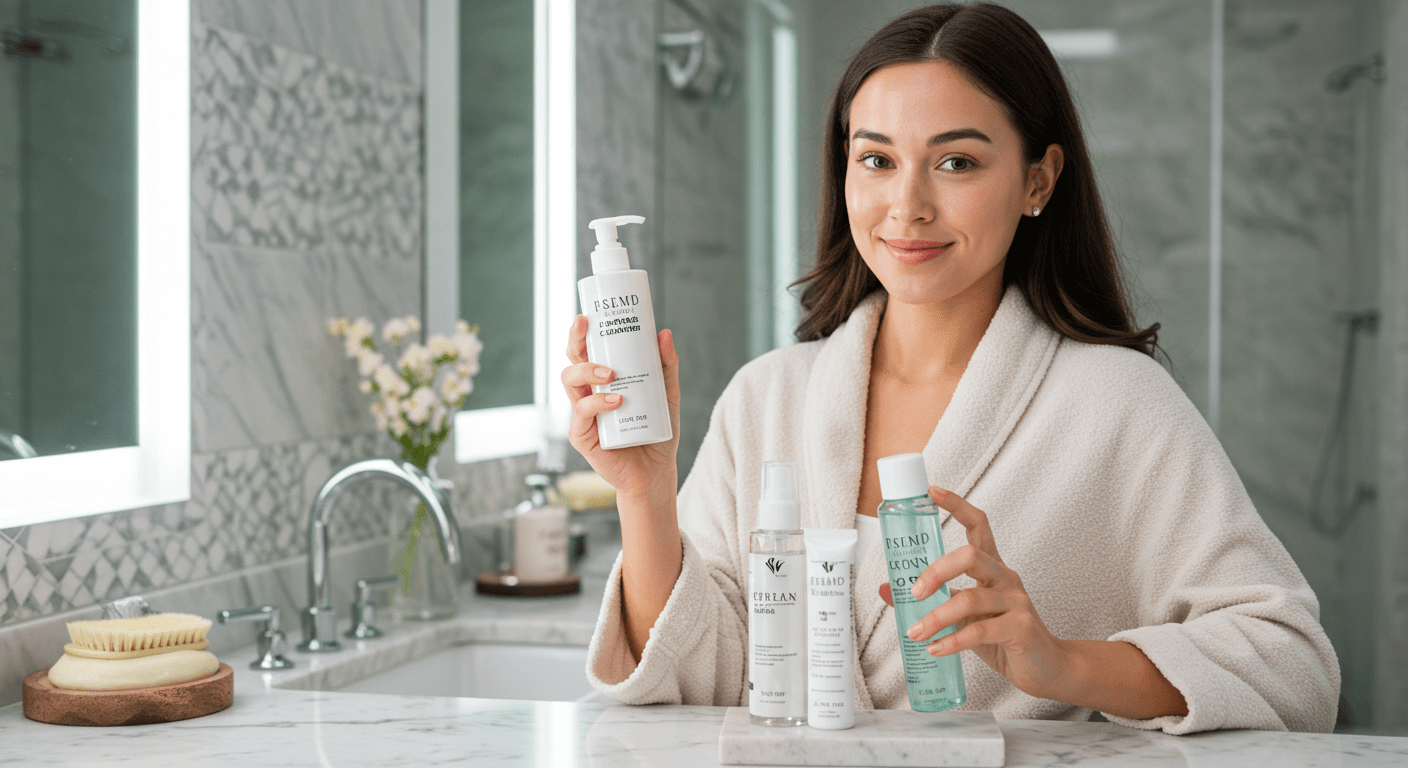
Morning Routine for Calming Rosacea
For a gentle start to your day, apply a fragrance-free cleanser to your face, followed by a soothing toner to balance your skin’s pH. Then, apply a serum that contains anti-inflammatory ingredients to help reduce redness. Finally, moisturize with a non-comedogenic lotion to hydrate your skin without clogging your pores.
Evening Routine for Soothing Rosacea
If you’re looking to soothe your skin after a long day, start by removing your makeup with a gentle cleanser. Then, apply a toner that contains witch hazel to help reduce puffiness. Next, apply a serum that contains hyaluronic acid to lock in moisture and soothe your skin. Finally, moisturize with a rich cream to provide an extra layer of hydration and protection. Understanding that everyone’s skin is different, it’s imperative to be patient and adjust your routine as needed. You may need to try a few different products before finding the ones that work best for your unique skin. But with a consistent routine and the right products, you can help calm your rosacea-prone skin and achieve a healthier, more radiant complexion.
Choosing the Right Products
Unlike other skin types, rosacea-prone skin requires a more delicate approach when it comes to choosing products. You need to be careful about the ingredients and formulations you use, as irritating substances can exacerbate your condition and lead to redness, itching, and flammation. When identifying products, look for those that are labeled as fragrance-free, hypoallergenic, and non-comedogenic, as these are less likely to irritate your skin. You should also opt for products that contain soothing ingredients such as green tea, aloe vera, and chamomile, which can help to calm and comfort your skin.
As you navigate the world of skincare products, you’ll come across a wide range of options, from natural ingredients to harsh chemicals. It’s crucial to understand the pros and cons of each, so you can make informed decisions about what works best for your skin. By choosing the right products, you can help to reduce inflammation, minimize redness, and promote healthy skin. So, let’s dive deeper into the world of natural ingredients and harsh chemicals, and explore how they can impact your rosacea-prone skin.
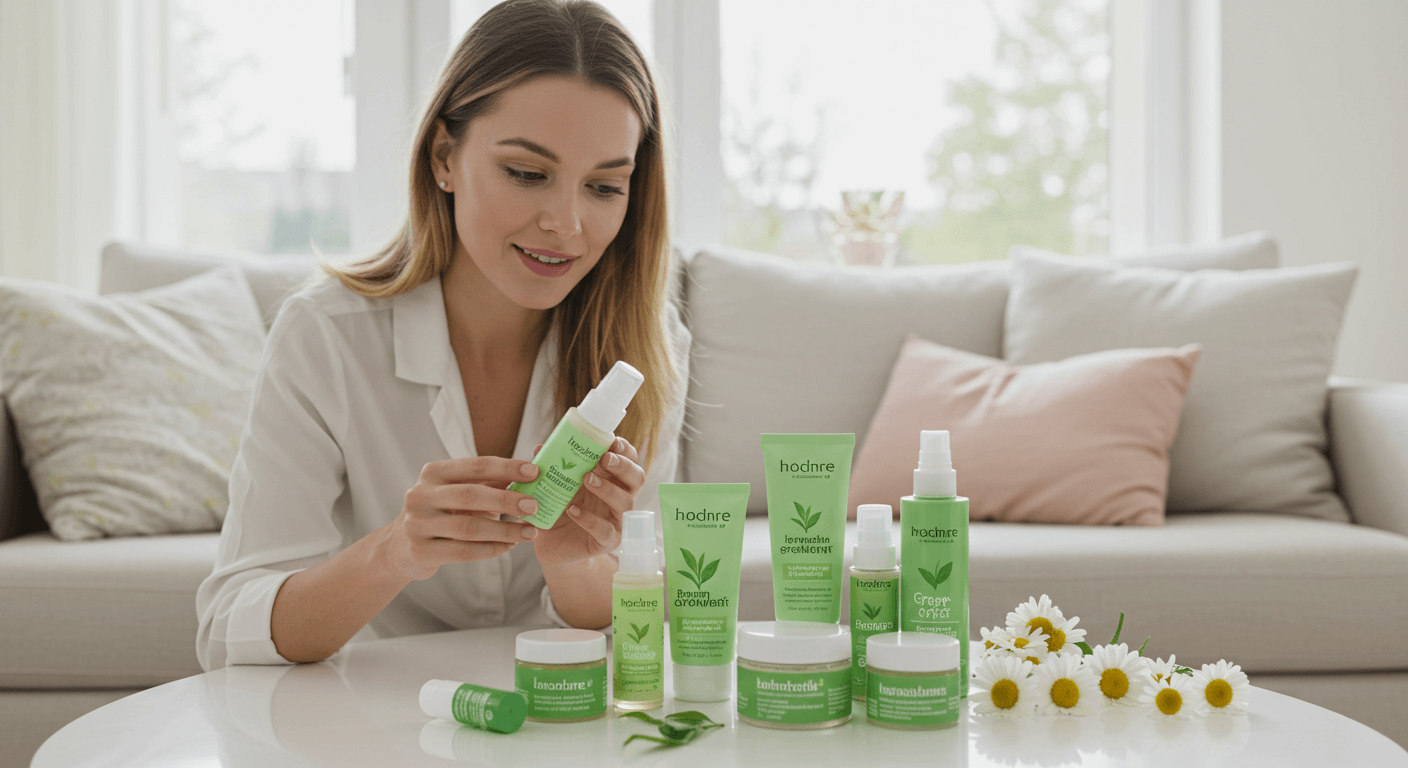
Pros of Natural Ingredients
Choosing natural ingredients can be a great way to soothe and calm your rosacea-prone skin. You can benefit from using products that contain natural antioxidants, anti-inflammatory compounds, and soothing plant extracts, which can help to reduce redness and promote healthy skin. Natural ingredients such as tea tree oil, lavender oil, and rosehip oil have been shown to have anti-inflammatory properties, which can help to calm and comfort your skin. By incorporating these ingredients into your skincare routine, you can help to reduce irritation and promote a healthy glow.
Selecting natural ingredients can also be a great way to avoid harsh chemicals and artificial fragrances, which can irritate your skin and exacerbate your rosacea. You can opt for products that are labeled as organic or natural, as these are more likely to contain gentle ingredients that won’t irritate your skin. By choosing natural ingredients, you can help to nourish and protect your skin, reducing the appearance of redness and inflammation.
Cons of Harsh Chemicals
The harsh chemicals found in some skincare products can be extremely damaging to your rosacea-prone skin. You should avoid products that contain artificial fragrances, dyes, and preservatives, as these can irritate and inflame your skin. Harsh chemicals such as sulfates, parabens, and phthalates can strip your skin of its natural oils, leading to dryness, itching, and redness. By avoiding these ingredients, you can help to protect and soothe your skin, reducing the appearance of rosacea symptoms.
The presence of harsh chemicals in skincare products can also have long-term consequences for your skin. You may experience increased sensitivity, Premature aging, and skin discoloration, which can be difficult to reverse. Cons of harsh chemicals can be severe, and it’s crucial to be aware of the potential risks and dangers associated with using products that contain these ingredients. Cons such as skin irritation, allergic reactions, and hormone disruption can have a significant impact on your overall health and wellbeing, making it crucial to choose products that are gentle and natural.
Lifestyle Changes for Rosacea Management
To effectively manage your rosacea-prone skin, you need to make some lifestyle changes that will help reduce the frequency and severity of flare-ups. You can start by identifying and avoiding your personal triggers, which can be anything from spicy foods to extreme temperatures. By being mindful of your environment and daily habits, you can take the first step towards calming your skin. As you navigate your journey to manage rosacea, you’ll find that small changes can add up to make a big difference in the health and appearance of your skin.
Rosacea-like symptoms can be alleviated by incorporating healthy habits into your daily routine.

Dietary Tips for Reducing Rosacea
You can try incorporating anti-inflammatory foods into your diet, such as omega-3 rich foods and antioxidant-rich fruits. Here are some tips to get you started:
- Stay hydrated by drinking plenty of water throughout the day
- Avoid that can exacerbate rosacea symptoms, such as dairy and gluten
- Incorporate probiotic-rich foods into your diet to support gut health
Recognizing the impact of your diet on your skin is the first step towards making positive changes that will help alleviate rosacea symptoms.
Stress Management Techniques
Even if you’re doing everything right, stress can still trigger rosacea flare-ups. You can try practicing relaxation techniques such as meditation, deep breathing, or yoga to help manage stress and anxiety. By taking a few minutes each day to calm your mind and body, you can help reduce the frequency and severity of rosacea symptoms.
Dietary changes can also play a role in stress management, as a healthy diet can help support mental health and overall wellbeing. By fueling your body with nourishing foods and staying hydrated, you can better equip yourself to handle stressful situations and reduce the likelihood of rosacea flare-ups. As you work to manage your stress levels, you’ll find that your skin begins to reflect the positive changes you’re making, becoming clearer and healthier with time.
Common Mistakes to Avoid
After you’ve figured out your skincare routine, it’s time to talk about what not to do. You’ve probably heard the saying “too much of a good thing” – and when it comes to calming rosacea-prone skin, this couldn’t be more true. Over-exfoliating and under-moisturizing are two of the most common mistakes people make when trying to soothe their skin. You might think that exfoliating is the answer to all your skin problems, but trust us, gentle is the way to go. When you over-exfoliate, you’re stripping your skin of its natural oils, leading to even more redness and irritation.
Now that we’ve got that covered, let’s dive deeper into the dangers of over-exfoliating and under-moisturizing.
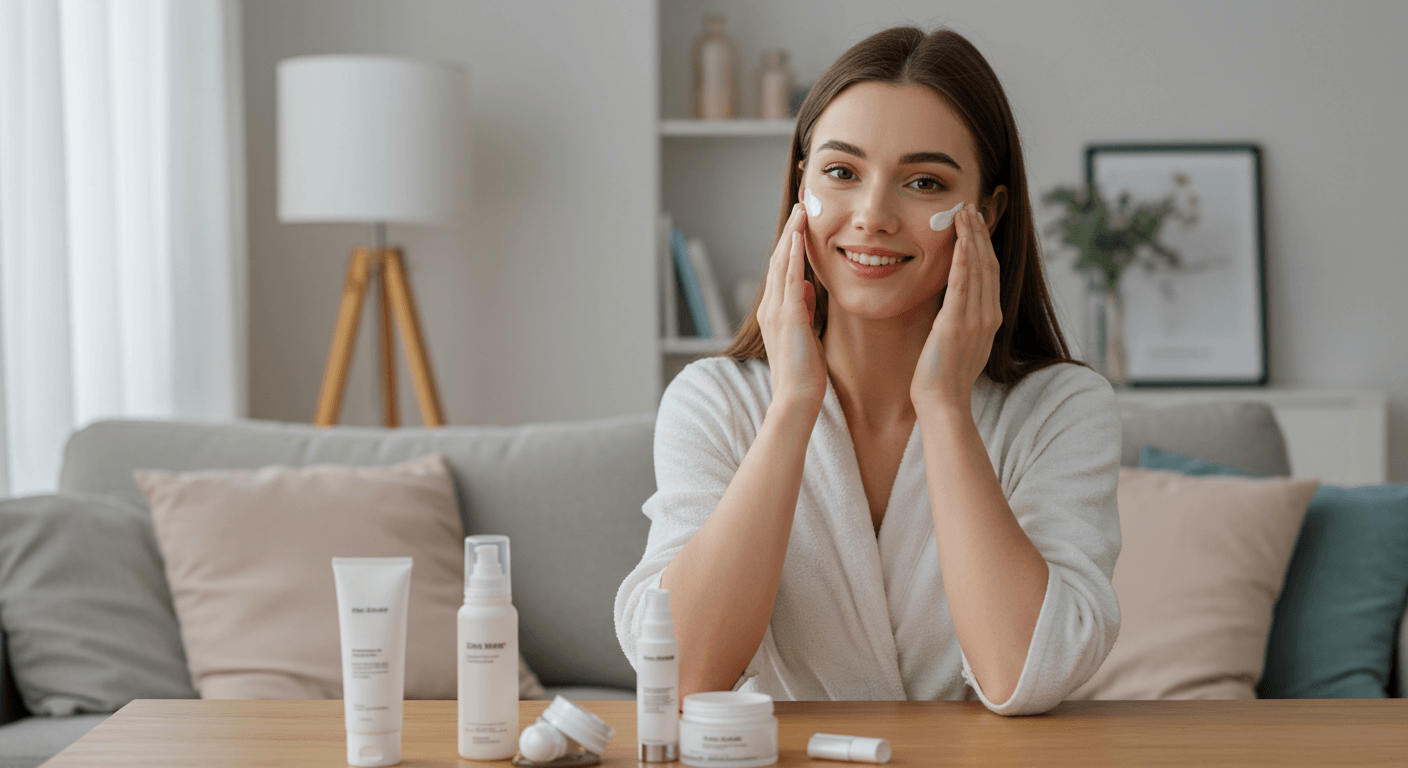
Over-Exfoliating and Under-Moisturizing
Now, you might be thinking, “But I need to get rid of all the dirt and impurities!” And we get it, clean skin is important. However, when you over-exfoliate, you’re not only removing dirt, but also the good bacteria that your skin needs to thrive. And on the other hand, under-moisturizing can leave your skin feeling dry and tight, making it more prone to irritation. You need to find a balance between keeping your skin clean and keeping it hydrated.
Ignoring Sun Protection
On the topic of things you shouldn’t skip, sun protection is at the top of the list. You might think that a little bit of sun won’t hurt, but UV rays can cause serious damage to your skin, especially if you’re prone to rosacea. When you don’t wear sunscreen, you’re leaving your skin vulnerable to burns, hyper-pigmentation, and even premature aging. And let’s not forget about the increased risk of skin cancer – it’s just not worth it, you need to prioritize your skin health.
Protection from the sun is not just about slapping on some sunscreen and calling it a day. You need to be consistent and make it a part of your daily routine. Look for a broad-spectrum sunscreen with an SPF of at least 30 and apply it every morning, even on cloudy days. And don’t forget to reapply every two hours or immediately after swimming or sweating. By taking these simple steps, you can significantly reduce your risk of sun damage and keep your skin looking healthy and radiant. So, make sun protection a priority and your skin will thank you.
To wrap up
Upon reflecting on the steps to calm rosacea-prone skin, you’ve likely realized that it’s all about finding the perfect balance for your sensitive skin. You’ve learned to ditch the harsh products, opt for gentle cleansers, and moisturize like it’s your job (because, let’s be real, it kind of is). By following these simple yet effective steps, you’ll be well on your way to soothing your skin and reducing those pesky rosacea flare-ups. And, as you continue on your skincare journey, you’ll become more in tune with your skin’s unique needs, allowing you to make adjustments as needed to keep your skin happy and healthy.
Now that you’re equipped with the knowledge to tackle your rosacea-prone skin, it’s time to take your skincare routine to the next level. For a more in-depth look at how to care for your skin, you can check out Rosacea-prone skin: the skincare guide for rosacea to learn even more about the best practices for soothing and calming your skin. As you move forward, you’ll find that your skin will thank you for the extra TLC, and you’ll be rocking a confident, radiant glow in no time. So go ahead, give your skin the love it deserves, and get ready to take on the world with your newfound skincare savvy!
FAQ:
Q: What are the initial steps to take when creating a skincare routine to calm rosacea-prone skin?
A: When creating a skincare routine to calm rosacea-prone skin, it’s important to start by identifying and avoiding triggers that can exacerbate the condition. This includes avoiding harsh skincare products, extreme temperatures, and spicy foods. Begin with a gentle, fragrance-free cleanser and a lightweight moisturizer. Be patient and give your skin time to adjust to new products, introducing them one at a time to monitor for any adverse reactions.
Q: How do I choose the right products for my rosacea-prone skin?
A: Choosing the right products for rosacea-prone skin involves looking for products labeled as “non-comedogenic” or “hypoallergenic,” which are less likely to clog pores or cause allergic reactions. Opt for products with soothing ingredients like aloe vera, green tea, or chamomile. Avoid products containing alcohol, artificial fragrances, or dyes, which can irritate the skin and worsen rosacea symptoms. Also, consider using products with sunscreen, as UV rays can trigger rosacea flare-ups.
Q: What is the best way to cleanse rosacea-prone skin without irritating it further?
A: To cleanse rosacea-prone skin without irritating it, use lukewarm water and a gentle, fragrance-free cleanser that is specifically formulated for sensitive skin. Massage the cleanser onto your skin with your fingertips in a circular motion, then rinse thoroughly with lukewarm water. Pat dry with a clean towel, rather than rubbing, which can irritate the skin. Cleansing once or twice a day is usually sufficient, depending on your skin type and activities. Be gentle, as over-washing can strip your skin of its natural oils, leading to increased dryness and irritation.
Q: Are there any specific ingredients or treatments that can help calm rosacea-prone skin?
A: Yes, several ingredients and treatments can help calm rosacea-prone skin. Topical creams or gels containing metronidazole or azelaic acid can help reduce redness and inflammation. Laser therapy and intense pulsed light (IPL) treatments can also be effective in reducing the appearance of rosacea. Natural ingredients like niacinamide, which has anti-inflammatory properties, and hyaluronic acid, which helps retain moisture, can also be beneficial. Additionally, avoiding triggers such as stress, which can exacerbate rosacea, through stress management techniques like meditation or deep breathing exercises, can help in calming the skin.
Q: How often should I moisturize rosacea-prone skin, and what kind of moisturizer is best?
A: Moisturizing is an important step in any skincare routine, especially for rosacea-prone skin, as it helps to lock in moisture and protect the skin from environmental irritants. Apply a moisturizer immediately after cleansing, while the skin is still slightly damp, to help trap in moisture. For rosacea-prone skin, it’s best to use a lightweight, oil-free moisturizer that won’t clog pores. Look for a moisturizer that is labeled “non-comedogenic” or “oil-free” and contains soothing ingredients like aloe vera or green tea. Moisturize at least twice a day, or as needed, to keep your skin hydrated and comfortable. Adjust the frequency based on your skin’s response and the climate you’re in.

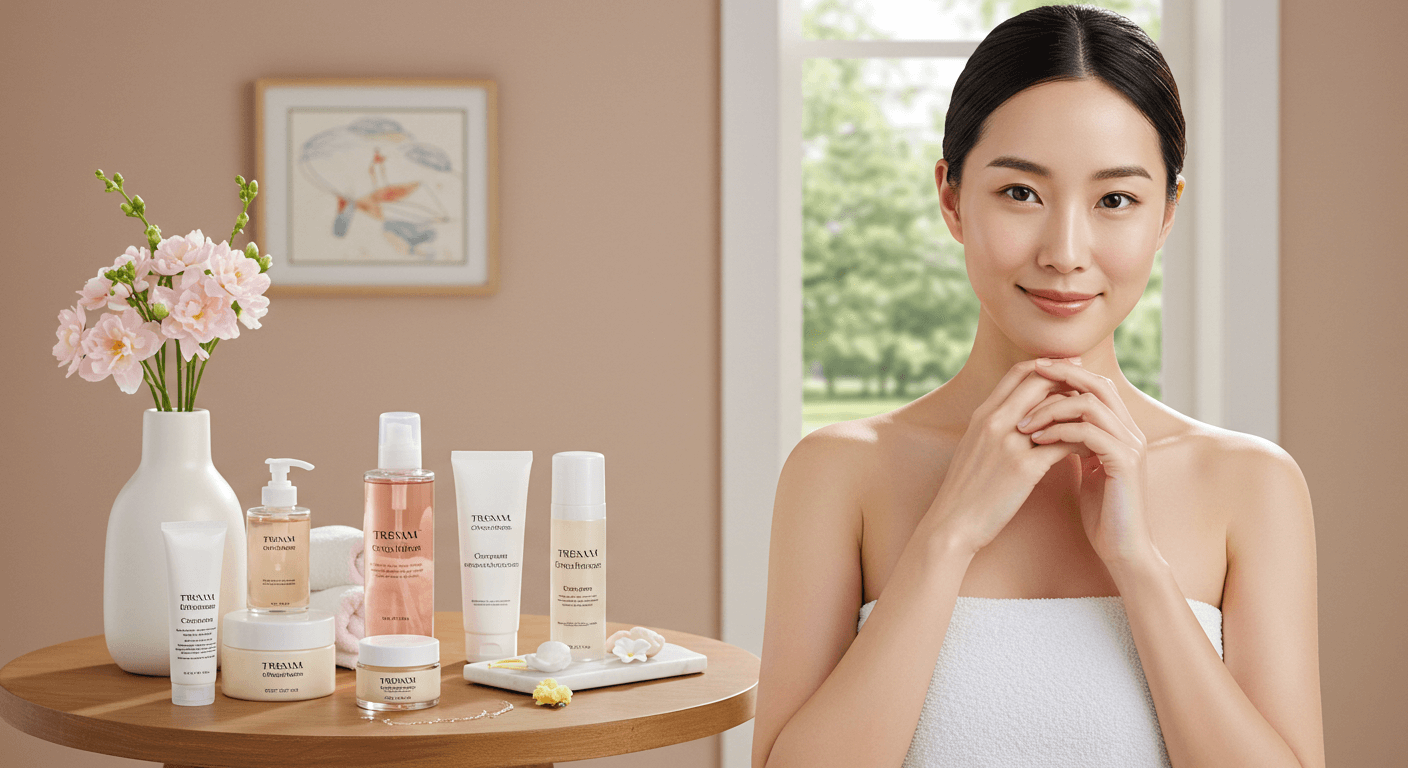




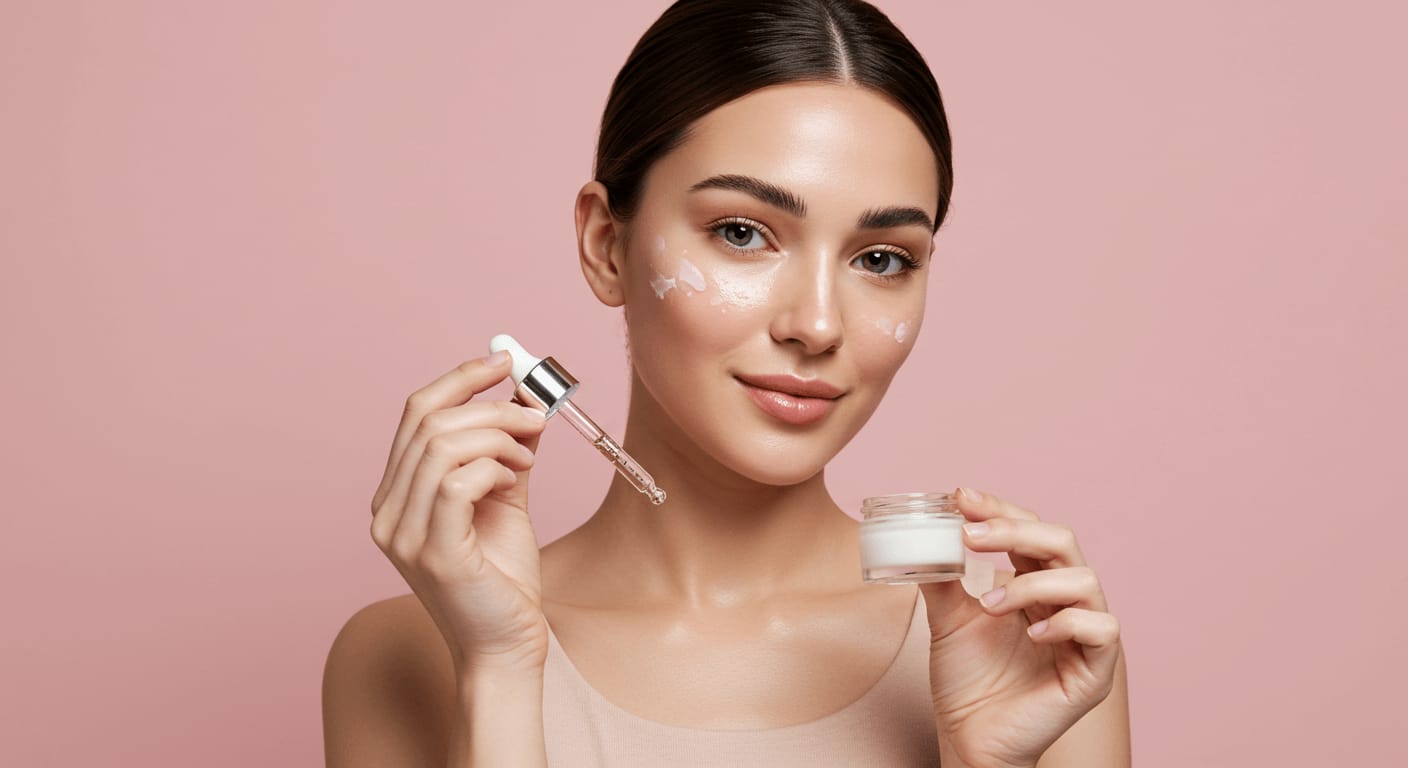

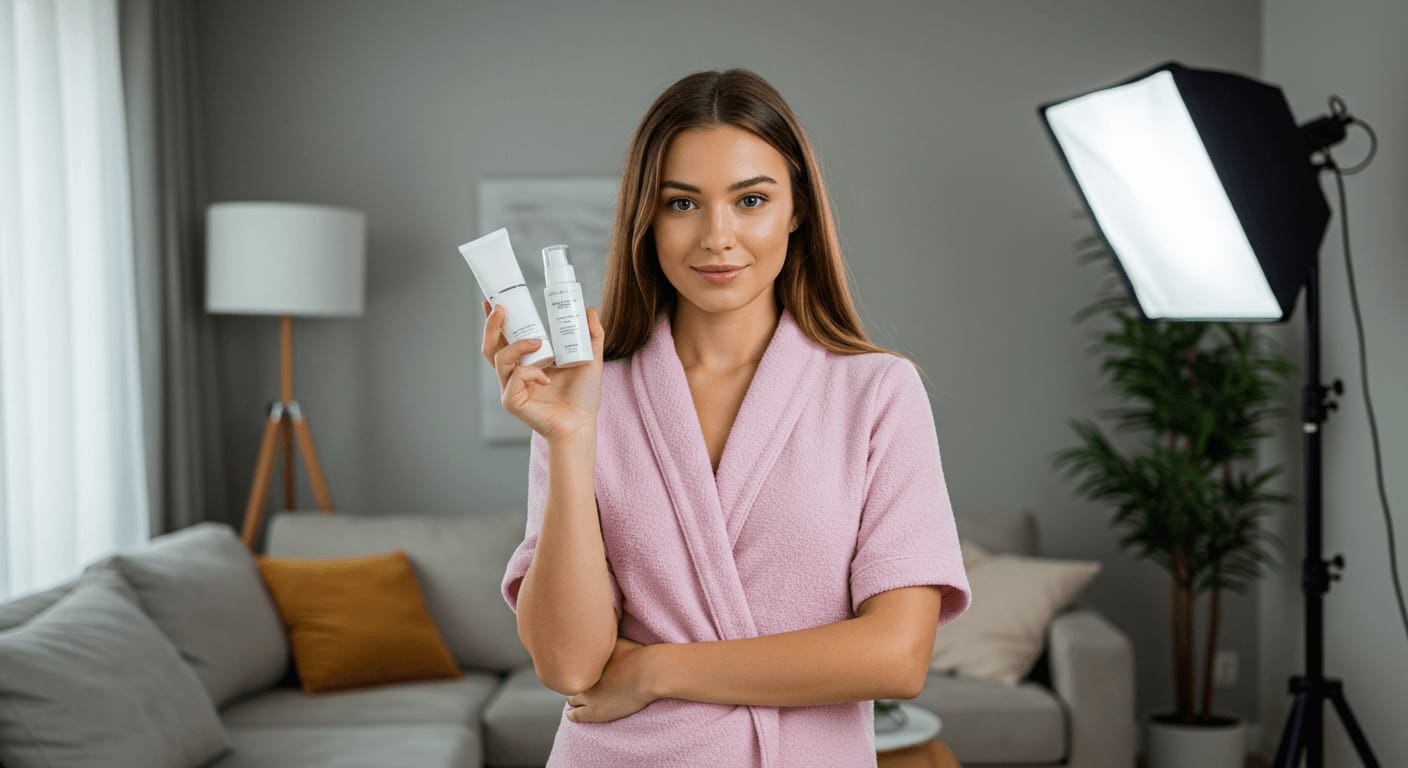

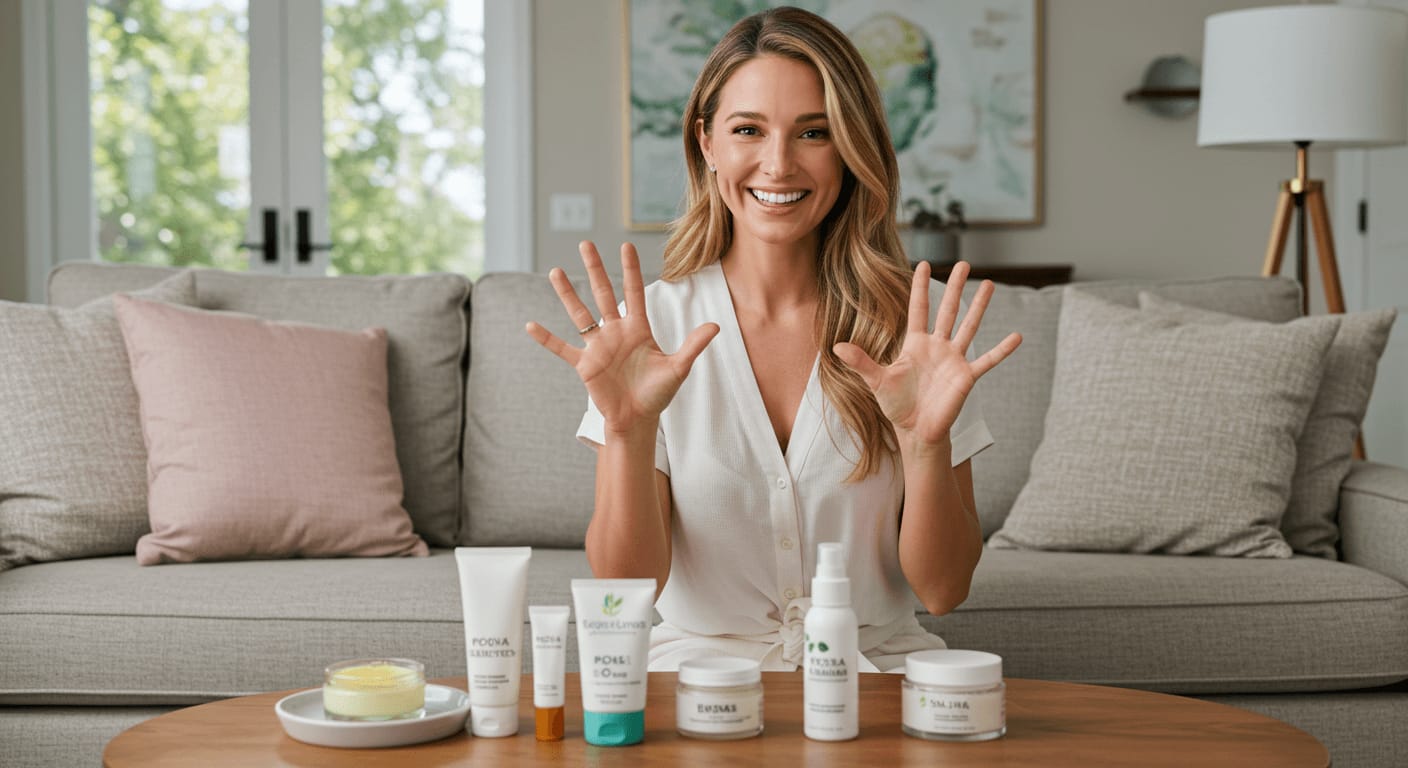

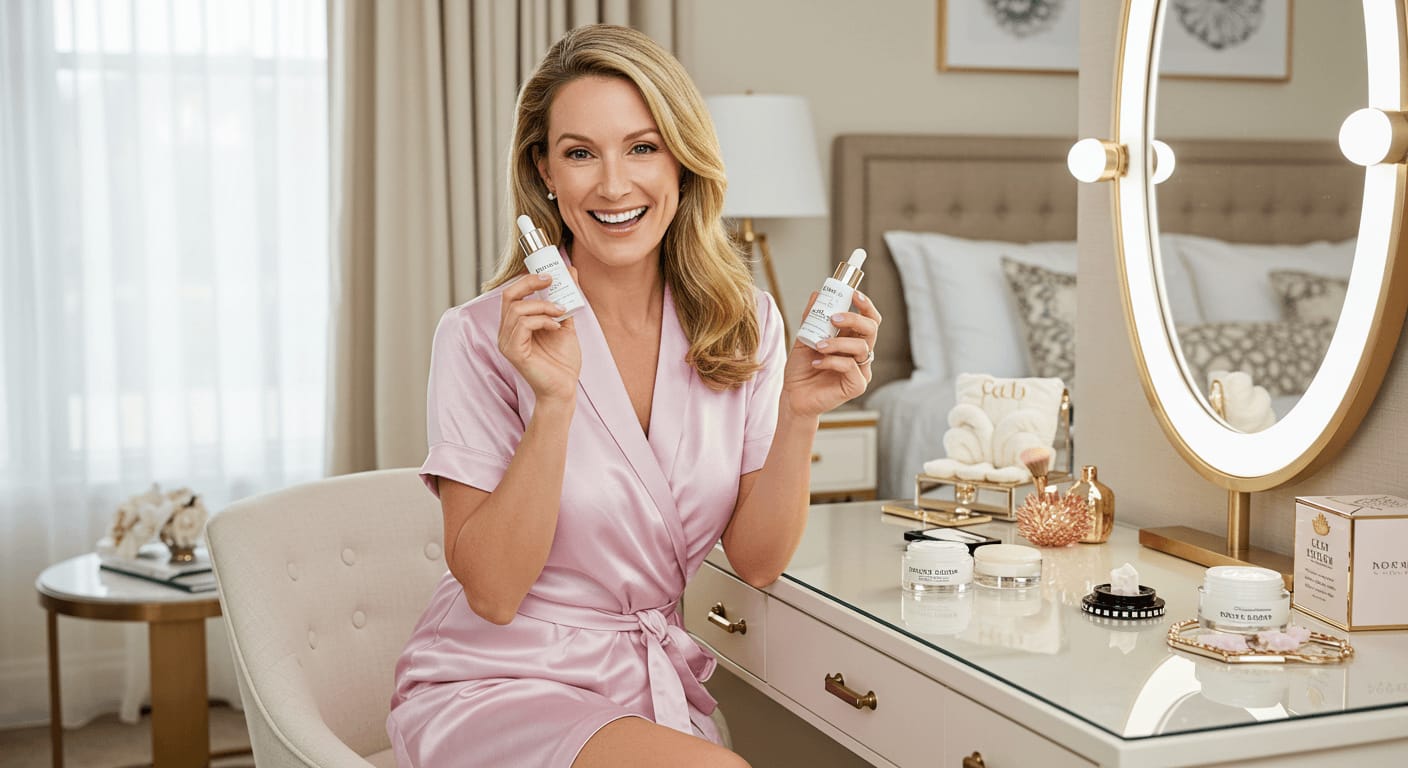



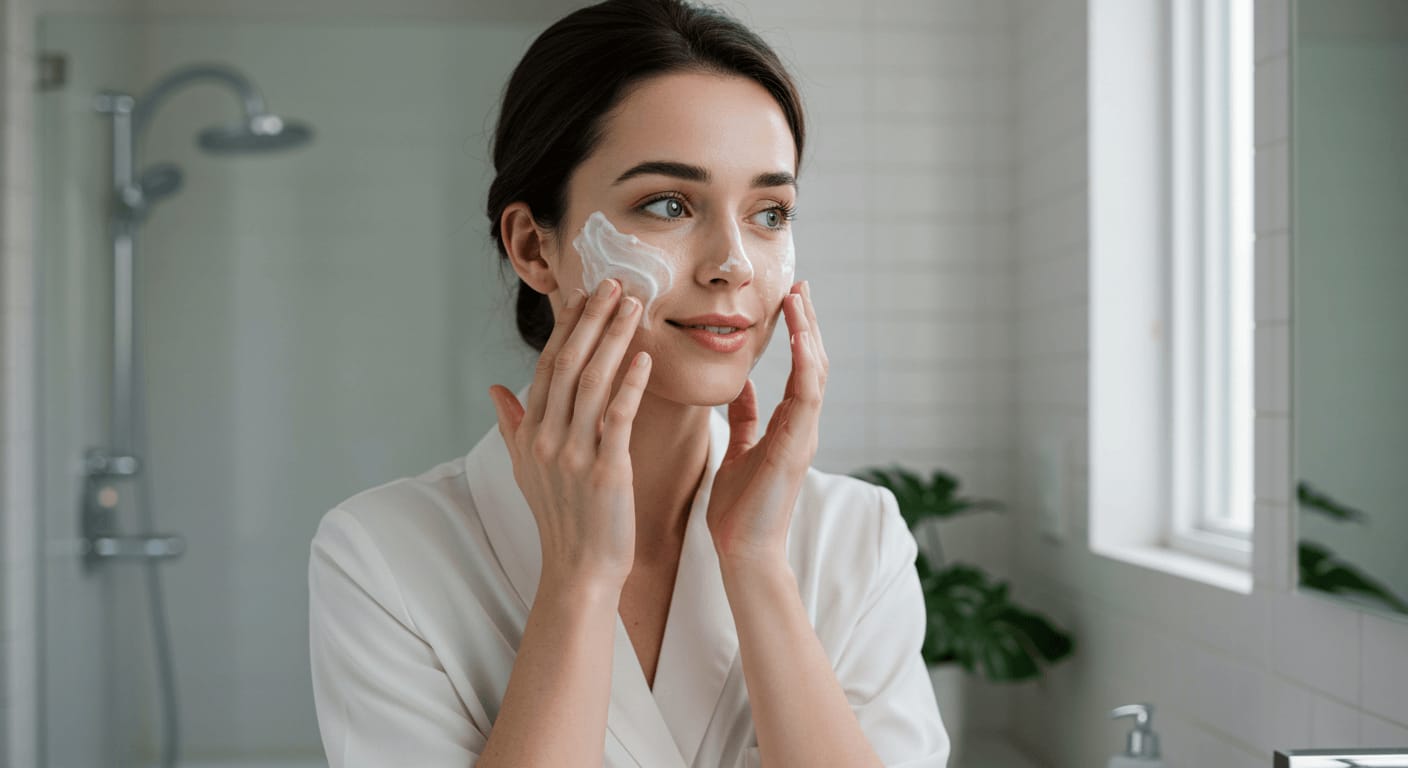








0 Comments